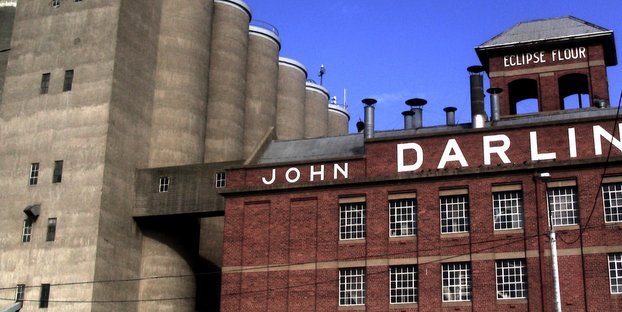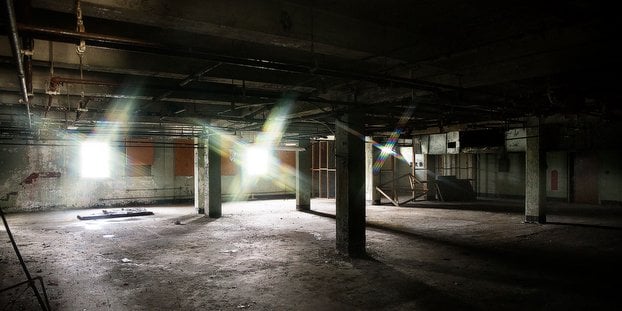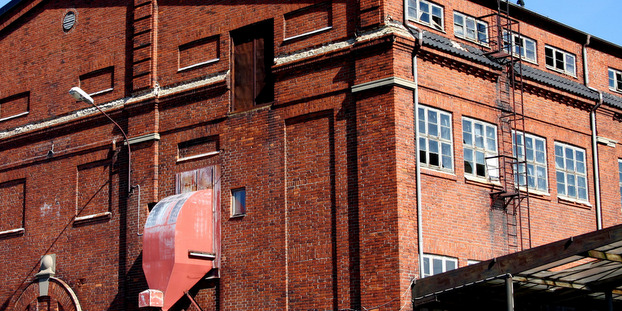
From a jailhouse in Georgia to a fire station in Ohio, craft breweries are springing up everywhere. With the popularity of these breweries soaring, making up 11 percent of the country’s beer production and consumption market in 2014, there are renewed opportunities for old factories and large abandoned spaces with high ceilings to reinvent themselves. Places with open floor plans can provide the perfect setting to easily install brewing, fermenting and packaging equipment.
There are numerous examples of such building reuse in the Commonwealth, including Jack’s Abby Brewing Co.’s reuse of the Dennison Manufacturing building located at 100 Clinton Street in Framingham, Mass.; Abandoned Building Brewery, which is housed in an old mill building known as The Brickyard in downtown Easthampton, Mass.; and Wormtown Brewery that recently expanded to an auto dealership on Shrewsbury Street in Worcester.

Jack’s Abby Brewing recently embarked on an expansion to a much larger space by renovating a 67,000-square-foot manufacturing building in historic downtown Framingham into a brewery with 5,000-square-foot restaurant and tasting room. It is expected to open at the end of this year. Abandoned Building Brewery opened at the end of 2013, after converting a 1910 building previously used by a plastic bag manufacturer into a 2,700-square-foot micro-brewery. Wormtown Brewery was initially located in a former ice cream shop on Park Avenue in Worcester and now occupies 10,000 square feet of the former Edward Buick building in Worcester’s own North end.
These large, old and often abandoned buildings are much more than just cheap space. The reasons that craft brewers are so attracted to these spaces is because they are large, open and usually cost less to acquire. There may also be tax incentives available to aid in keeping start-up costs down.
With benefits there are also risks to consider such as zoning regulations that restrict the use of properties. The zone district that these properties are located in, such as industrial, may allow brewing and manufacturing, but may not allow retail or restaurant/tasting room uses. If such uses are not allowed as a matter of right, expansion may require zoning relief. Also, the use will need to comply with applicable dimensional requirements or qualify for grandfathering (provided the prior use had not been ceased for more than two years). Beyond the zoning considerations, older structures have historic, environmental and title issues that may pose barriers to their redevelopment and repurposing.
A common environmental issue for brewers is the heavy water use, which poses environmental and economic hurdles due to water consumption and wastewater disposal. The chosen building must have sufficient local facilities and utilities available to it to support the water-related demands of a brewery. Moreover, the discharge of the wastewater produced by brewers usually requires approvals from the Massachusetts Department of Environmental Protection or U.S. Environmental Protection Agency.
In sum, buildings that seem appropriate in location and size may not be conducive to the desired use. So, caution, education and due diligence must be exercised.
Donna Truex is a partner in Bowditch & Dewey LLP’s real estate and environmental practice and a member of the firm’s craft brewery group. She represents breweries in all aspects of corporate compliance and real estate and has successfully defended these clients in licensing proceedings before the ABCC.
is a partner in Bowditch & Dewey LLP’s real estate and environmental practice and a member of the firm’s craft brewery group. She represents breweries in all aspects of corporate compliance and real estate and has successfully defended these clients in licensing proceedings before the ABCC.





KrisHoellen says
Communities change one building at a time. Breweries can spark economic development, attracting both tourists and other entrepreneurs.
Brad Thomas liked this on Facebook.
RT https://t.co/yBBRdJ6F6P BEerCRAFTY: How that abandoned building could be your next #brewery: http://t.co/iKy0ftGryu
How that abandoned building could be your next #brewery: http://t.co/mlAzPTuS4m
Hauck Architecture liked this on Facebook.
RT @YCHHOPS: Who’s done this? “Re-purposing real estate: How that abandoned building could be your next brewery” http://t.co/jbONSDP9Mx #br…
RT @YCHHOPS: Who’s done this? “Re-purposing real estate: How that abandoned building could be your next brewery” http://t.co/jbONSDP9Mx #br…
Who’s done this? “Re-purposing real estate: How that abandoned building could be your next brewery” http://t.co/jbONSDP9Mx #brewery #beer
RT @sullivanday30: Repurposing older buildings for breweries – http://t.co/gIM8w4EULu @CraftBrewingBiz #craftbeer #oldermeanscharacter #rep…
Repurposing older buildings for breweries – http://t.co/gIM8w4EULu @CraftBrewingBiz #craftbeer #oldermeanscharacter #repurpose #coololdstuff
Good article about what might be a good brewery building, but needs special considerations before making the deal. http://t.co/shWek3ql9n
How that abandoned building could be your next brewery http://t.co/48N0ddewlv
Lee III liked this on Facebook.
Really Good FYI! https://t.co/IjiDH6oGaG
Derek Needham liked this on Facebook.
Re-purposing real estate: How that abandoned building could be your next brewery http://t.co/eoht8JRFUX
How that abandoned building could be your next brewery http://t.co/nqbwjcmoHK via @craftbrewingbiz
Joshua Bennett liked this on Facebook.
RT @crsimp01: How that abandoned building could be your next brewery http://t.co/ghr5hiVYu9 via @craftbrewingbiz
Beall Brewery Insurance liked this on Facebook.
RT @crsimp01: How that abandoned building could be your next brewery http://t.co/ghr5hiVYu9 via @craftbrewingbiz
Brew and Be Covered liked this on Facebook.
Mike Bernstein liked this on Facebook.
How that abandoned building could be your next brewery http://t.co/ghr5hiVYu9 via @craftbrewingbiz
RT @CraftBrewingBiz: Re-purposing real estate: How that abandoned building could be your next brewery hotspot: http://t.co/sjVSe5REJ2
Jeff Taylor liked this on Facebook.